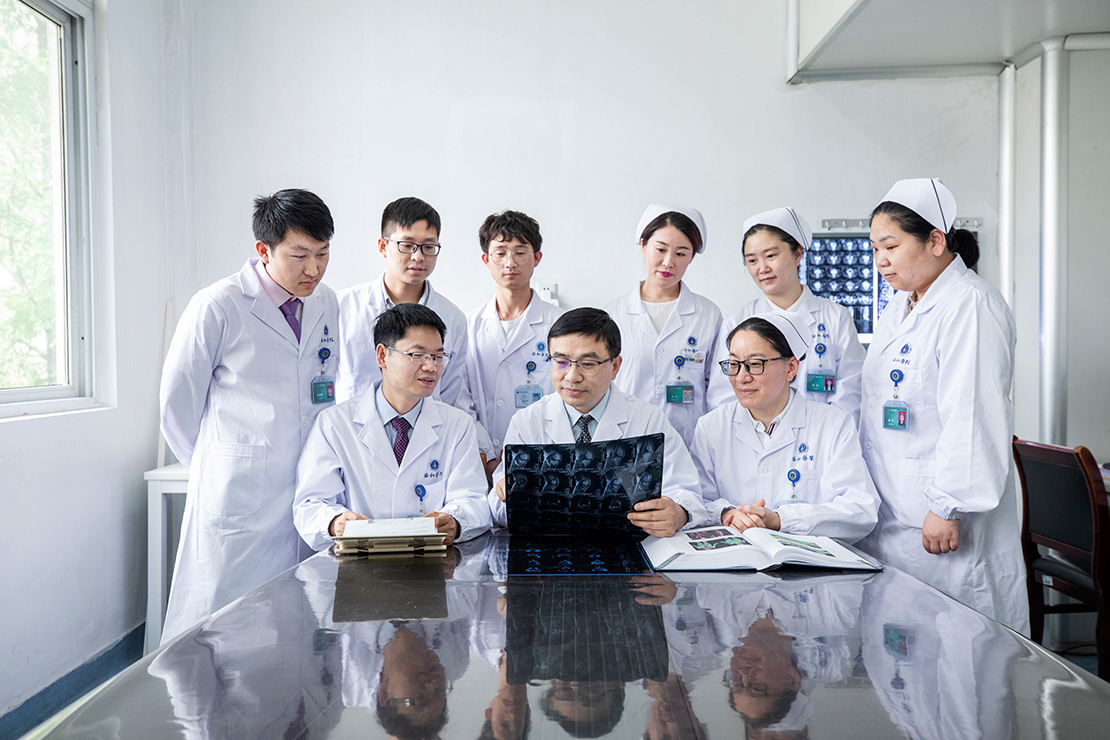Medical Services

Pain Medicine Dept.
Brief introduction
The Pain Medicine Department is affiliated to the Institute of Anesthesiology and Critical Care of Union Hospital, and has a long history of pain diagnosis and treatment. In 1966, it was the first to carry out a single epidural injection of morphine for postoperative analgesia in China. In 1985, the anesthesia pain clinic was set up, and the full-time pain clinic was set up in 1998. In 2008, the department was established and a pain ward was added. The Pain Medicine Department is the chairman unit of the Pain Branch of the Wuhan Medical Association, a national demonstration base for standardized diagnosis and treatment of refractory cancer pain, and the "Demonstration Unit for Clinical Application of Ozone Therapy" awarded by the World Pain Physicians Association. The pain ward currently has 30 beds open, and the pain clinic has pain examination room and pain treatment room. The annual outpatient volume is more than 10,000.
The Pain Medicine Department currently has 2 chief physicians and 2 associate chief physicians, who include one doctoral supervisor and two master supervisors, 2 attending physicians, and 30-40 rotating resident doctors, postgraduates and training doctors every year. The current academic leader of the department of pain, Professor YAO Shanglong, who is the director of the Institute of Anesthesiology and Critical Care Medicine, enjoys a high reputation in the domestic anesthesiology and pain field. The deputy director of the department of pain is associate Professor YANG Dong. In the past two years, the department of pain has won 1 National Natural Science Foundation of China, 3 provincial projects, and 1 second prize of Provincial Science and Technology Progress Award.
The Pain Medicine Department of Union Hospital focuses on the treatment of various chronic pain, including spinal pain (such as cervical spondylosis, lumbar disc herniation, lumbar postoperative pain syndrome, etc.), limb joint pain (such as shoulder Perioditis, degenerative osteoarthritis, tennis elbow, tenosynovitis, etc.), neuropathic pain (such as trigeminal neuralgia, post-herpetic neuralgia, diabetic peripheral neuralgia, etc.), pain caused by ischemic or sympathetic nerve diseases (such as thromboangiitis obliterans, causalgia, sympathetic dystrophy, etc.) as well as cancer pain. The Pain Medicine Department now has the DSA interventional treatment room, the high-definition intervertebral foraminal surgery system, the spine minimally invasive surgery power system, the radio frequency treatment instrument, the EMS shock wave treatment instrument, the ozone treatment instrument, IRIS medical infrared imaging system, ultrasonic instrument, silver needle thermal conductivity inspection device and other high-end pain diagnosis and treatment equipment, which can provide high-quality, efficient and diversified medical services to the majority of pain patients.
Since the establishment of the Pain Medicine Department, the most advanced pain diagnosis and treatment technology has been continuously used, and various neurointervention technologies, neuromodulation technologies, spinal intervention technology and spinal endoscopy technology have been gradually developed. At the end of the last century, the Pain Medicine Department took the lead in developing the "spinal canal drug infusion system" to treat intractable pain, and successfully implemented the first case of fully implanted programmable intrathecal morphine pump at the Pain Medicine Department of central China in 2018. In 2013, the department launched an advanced spinal minimally invasive technology, intervertebral foramen mirror technology, which has the advantages of less trauma, definite curative effect, high safety, fast postoperative recovery and low recurrence rate. In recent years, the department has independently developed the analgesic technology, sacral nerve electrical stimulation and spinal cord electrical stimulation, which are used to treat bladder voiding dysfunction and intractable pain (such as herpes zoster neuralgia, pain syndrome after lumbar surgery, pain after spinal cord injury, pain after brachial plexus injury, etc.). In 2019, the department became the first among Pain Medicine Departments in Hubei Province to carry out balloon compression technology for the treatment of trigeminal neuralgia, and the effect was remarkable.




